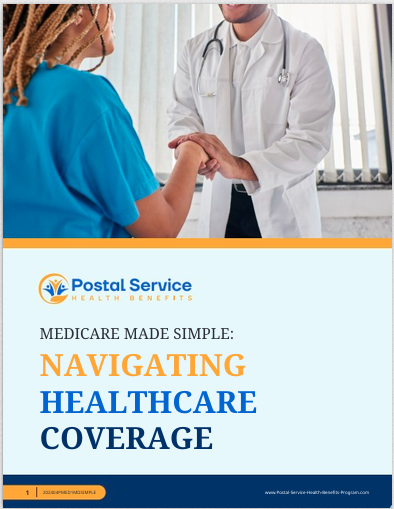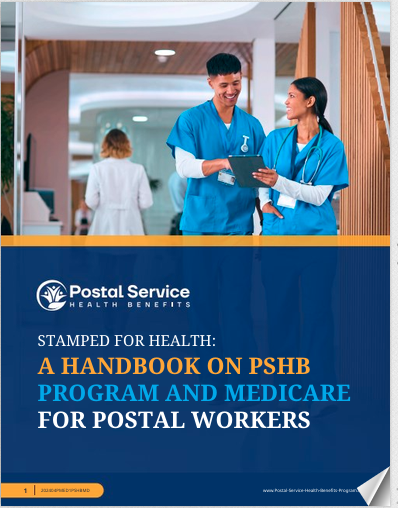Key Takeaways
- Recent changes in the Postal Service Health Benefits (PSHB) program aim to simplify access to mental health care for postal workers, offering better support and ease of use.
- With the new PSHB system, postal employees can expect smoother processes and more comprehensive mental health care coverage starting January 2025.
Mental Health Care for Postal Workers Just Got Easier with PSHB – Here’s What’s Changing
Mental health has become a growing priority across various industries, and the U.S. Postal Service is no exception. Postal workers often face unique stresses, from the demanding nature of the job to the emotional strain that comes with ensuring timely deliveries. In recognition of this, a significant shift is happening with the introduction of the Postal Service Health Benefits (PSHB) program, which will replace the Federal Employees Health Benefits (FEHB) program starting in January 2025. The PSHB is designed to provide more streamlined, comprehensive, and accessible health coverage, especially in the area of mental health care.
A New Era for Mental Health Coverage
The PSHB program is set to enhance the quality of mental health care available to postal employees. By overhauling the previous system, the PSHB will make it easier for postal workers to seek mental health services, whether it’s for anxiety, depression, or other psychological conditions that have risen in prominence in recent years. Mental health care coverage will now be more inclusive, with fewer administrative barriers.
One of the most significant changes is that postal workers will have broader access to mental health specialists, including therapists, psychologists, and psychiatrists. This update reflects the growing awareness of mental health as a critical component of overall well-being. Postal workers, many of whom work under pressure-filled conditions, will benefit greatly from this enhanced focus.
What Makes PSHB Different?
For years, postal employees have been covered under the Federal Employees Health Benefits (FEHB) program. While FEHB provided a range of health benefits, the PSHB system is specifically tailored to the needs of postal workers. This is a significant improvement as it acknowledges the distinct challenges and health risks faced by postal employees. With PSHB, mental health coverage is no longer a secondary concern but a primary focus of the program.
Postal employees will also see expanded networks of healthcare providers. This means more choices when selecting professionals for mental health care, giving workers the freedom to choose a specialist that suits their needs. The PSHB aims to reduce wait times for appointments, which can be a significant barrier to receiving timely care under the current system.
Expanded Access to Telehealth Services
With the rise of telehealth, especially during the COVID-19 pandemic, more postal workers can now access mental health care from the comfort of their homes. The PSHB is expected to offer expanded telehealth services, making it easier for postal employees to speak with mental health professionals without the need for in-person visits. Telehealth not only increases convenience but also encourages more employees to seek help, as the stigma of physically visiting a mental health professional can sometimes be a deterrent.
These telehealth services will also offer flexible scheduling, allowing postal workers who often work irregular hours to access mental health care on their terms. The new PSHB system acknowledges that mental health crises do not follow a 9-to-5 schedule, and workers need access to care whenever it’s required.
Reduced Administrative Burden for Mental Health Care
One of the key improvements under the PSHB system is the reduction of paperwork and bureaucratic hurdles that often delay mental health care. Previously, postal workers had to navigate complex insurance requirements to access mental health services. The new program aims to streamline these processes, reducing the number of steps required to approve mental health visits, treatments, or prescriptions.
Under PSHB, mental health care will be treated with the same priority as physical health, making it more accessible. This simplification will save postal workers time and reduce stress, allowing them to focus on their recovery and well-being rather than navigating administrative red tape.
Focus on Preventative Mental Health Measures
In addition to treatment, the PSHB will also place a stronger emphasis on preventive mental health care. This could include access to wellness programs, mental health screenings, and stress management resources. These programs aim to address mental health issues before they escalate into more serious conditions, reducing the overall need for intensive treatment in the long run.
Such preventative measures can be particularly beneficial for postal workers, who often face high levels of job-related stress. Long hours, physical labor, and dealing with unpredictable weather conditions are just a few of the factors contributing to mental strain. By offering early intervention programs, PSHB helps postal workers maintain better mental health and increases job satisfaction.
How the PSHB Impacts Family Members
The mental health benefits provided by the PSHB don’t just extend to postal workers; they also apply to eligible family members. Spouses and dependents will have access to mental health care services under the program. This ensures that the entire family unit can receive the care they need, which is crucial because mental health issues often affect more than just the individual.
By expanding these benefits to family members, the PSHB program promotes a healthier home environment for postal workers. Employees with family members who struggle with mental health challenges will find it easier to seek help without worrying about coverage or out-of-pocket expenses. This change reflects the PSHB’s commitment to addressing the broader impact of mental health on postal workers’ lives.
Key Dates and Transition Timeline
The transition from FEHB to PSHB will officially take place in January 2025. During this time, postal workers will be able to review and select new coverage options under the PSHB. It’s essential for postal employees to stay informed during this period, as their choices will impact their health care benefits moving forward.
The U.S. Office of Personnel Management (OPM) will guide postal workers through the transition, offering resources and tools to help them understand their new benefits. Additionally, postal workers are encouraged to consult with licensed insurance agents to navigate the process effectively.
Mental Health in the Workplace: Addressing the Unique Challenges of Postal Work
Working for the postal service comes with its own set of challenges. The demands of delivering mail, especially during peak seasons, can take a toll on the mental health of postal employees. The new PSHB program recognizes the importance of supporting postal workers through these challenges by providing improved access to mental health care.
Stress, burnout, and even trauma are not uncommon among postal workers, especially those in urban areas or in high-pressure environments. The updated PSHB plan not only offers access to care but is also expected to provide resources for postal workers to build resilience, manage stress, and prevent burnout.
What Postal Workers Should Do to Prepare
While the transition to PSHB is still several months away, postal employees should begin preparing now to ensure a smooth transition. This includes reviewing any current mental health treatments and discussing upcoming changes with their current healthcare providers. It’s also important to stay updated on the latest announcements from the U.S. Office of Personnel Management, as they will provide guidance on how to enroll in the PSHB program.
Postal workers should also consider utilizing the mental health resources currently available under the FEHB while preparing for the switch. By taking proactive steps now, postal employees can ensure that they are ready for the changes ahead and continue receiving the care they need without interruption.
What This Means for the Future of Postal Worker Health
The introduction of the PSHB program marks a pivotal moment for postal workers’ mental health care. By offering more accessible, comprehensive, and efficient mental health benefits, the PSHB sets the stage for better overall well-being among postal employees. Mental health care is no longer a luxury; it’s a necessity, especially in high-stress jobs like those within the postal service.
Looking ahead, the changes being introduced with PSHB could set a new standard for other federal employees, potentially leading to similar improvements in health benefits across other sectors. For postal workers, the PSHB program represents a significant step forward in recognizing and addressing mental health as a critical aspect of health care coverage.
Contact Information:
Email: [email protected]
Phone: 6026285580







